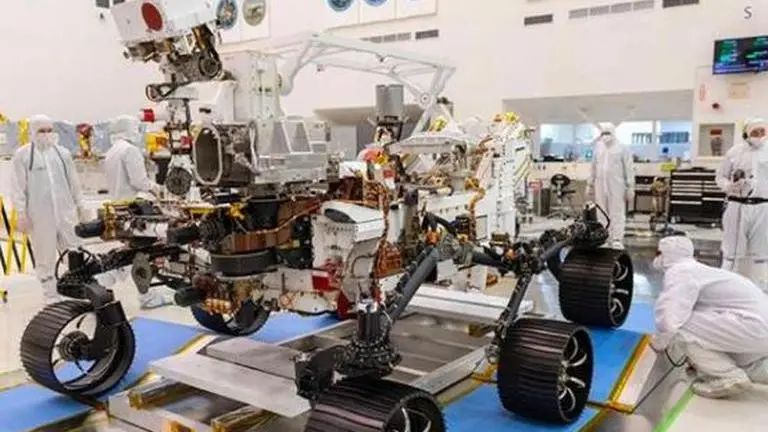Updated 22 August 2020 at 18:35 IST
NASA establishes Return Program Review Board to study Mars samples
NASA said that it was establishing a team to proactively carry out the analysis when Perseverance rover launched to Mars on July 30, returned on Earth.
- Science News
- 3 min read

In order to set goals and draft plans for the study of the return of samples from Mars, NASA has established a Mars Sample Return Program Independent Review Board. In a release, NASA said that it was establishing a team to proactively carry out the analysis when Perseverance rover launched to Mars on July 30, returned on the Earth with the drill bits, a coring arm, and sample tubes the hardware sent to space to collect Red planets samples. The observation and research into the sample will help NASA find whether microbial life was ever-present on the Red Planet.
"Mars Sample Return is a very high priority for the scientific community, based on the decadal survey and also of strategic importance for our Moon to Mars exploration program," said Thomas Zurbuchen, NASA's associate administrator for science at the agency's Headquarters in Washington, in the release. He added, “It's a highly complex international mission which requires focus to achieve technical, programmatic and mission success, and we want to have all the expertise available to us at this early stage to maximize mission success.”
NASA stands up these independent boards to help the agency learn from past experiences and uncover subtle issues in space systems that may not have yet received sufficient attention. This review will give us the chance to focus on overall mission success and to consider potential improvements that can be made early in the program to help ensure that outcome—Retired president of Orbital ATK, who will chair the new board, David Thompson, said.
In an earlier discovery that helped scientists resolve mysteries about Mars’ surface, NASA’s oldest spacecraft Mars Reconnaissance Orbiter (MRO) captured dark avalanches on Mars’ 1,640-foot-tall (500-meter-tall) cliff. Additionally, the InSight lander had initiated surface operations at Elysium Planitia on Mars revealing more about the Red planet’s surface details in the seismograph data that is collected about 10 weeks after landing. NASA’s Mars Reconnaissance Orbiter MRO, however, is one of the oldest spacecraft to scrutinize the Red Planet.
Advertisement
[Mars rover 2020. Image taken JPL NASA. Credit: NASA]
Advertisement
Assistance during preliminary formulation
Meanwhile, the newly launched Mars 2020 rover ‘Perseverance’ that took off from Cape Canaveral Air Force Station’s Space Launch Complex 41 onboard a United Launch Alliance Atlas V 541 rocket, last month, seeks to decode the presence of ancient microbial life on the red planet. Perseverance will collect the Mars soil in its sophisticated sampling system and return to Earth for scientists to determine more about “life on mars”. As per NASA’s release, the review board will assist NASA with the technical concept during preliminary formulation to provide robustness and the ability to fulfill the mission's essential requirements. The team will adopt lessons from the previous large, strategic science missions. The mission itself also advances technologies for human exploration of the Red Planet.
(Image Credit: NASA)
Published By : Zaini Majeed
Published On: 22 August 2020 at 18:35 IST


